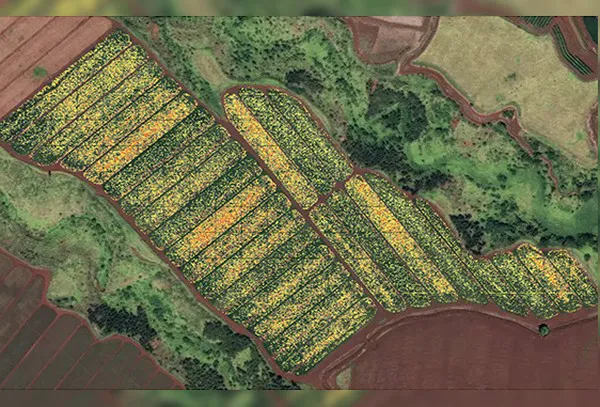In a new study funded by the U.S. Department of Agriculture’s Small Business Innovation Research program, researchers in the University of Hawaiʻi at Mānoa’s College of Tropical Agriculture and Human Resources, IntelinAir, Inc. and Columbia University are investigating whether remote sensing and computer vision can help pineapple growers carry out regular inspection of the field and automated counting of flower intensity.
The natural flowering of pineapple was the basis of the industry up until the 1960s. Now, pineapple fields are forced in blocks to flower, with a chemical that releases ethylene and induces flowering, making the fruit available year-round. Since pineapple is hand-harvested, a grower’s ability to harvest all of the fruit of a field in a single pass is critical to reduce field losses, costs, and waste, and to maximize efficiency.
 Image: University of Hawai'i
Image: University of Hawai'i
“Our work used deep learning-based density-estimation approaches to count the number of flowering pineapple plants in a field block,” said Robert Paull of the Department of Tropical Plant and Soil Sciences. “This enables growers to optimize their planning and management practices for getting optimum fruit harvest.”
Paull explained that drones are being used worldwide to monitor crop growth, disease and weeds, and to apply fertilizer and crop protection products. The tool allows growers to be more flexible, efficient and highly targeted, with lower costs and input application. They are also able to service hard-to-reach areas and where weather prevents access by heavy equipment.
“New technology and management strategies are critical for the economic success of farming in Hawaiʻi,” added Paull. “Drones are used widely, though less effort has been devoted to tropical agriculture systems. In the tropics, drones offer the ability to enhance precision agriculture, improve crop management, and reduce environmental impacts and costs.”
The full study appears in a recent edition of Frontiers in Plant Science.
For more information: hawaii.edu
